What's New
Displaying results 1331 - 1340 of 4899
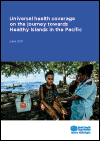
Resource | Publications,
This report presents the current status of UHC across PICs by reviewing key health service, finance and outcome indicators such as immunisation, access to improved drinking sources, current health expenditure and etc.
This report summarizes key findings from literature review, interviews and a technical consultation: three cross-cutting and interrelated implementation challenges faced by PICs in pursuing the Healthy Islands vision and UHC, with a particular focus on PHC.
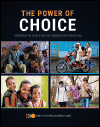
Resource | Publications,
Not so long ago, most people had large families: five children, on average. Where once there was one global fertility rate, today there are many, with differences wider than at any point in human history. Family size, whether small or large, is intertwined with reproductive rights, which are tied to many other rights, such as those to health and education, adequate income, the freedom to make choices, and non-discrimination.
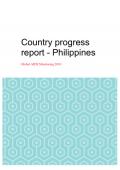
Resource | Publications,
At the 2011 United Nations General Assembly High-Level Meeting on AIDS that took place in June in New York, Member States adopted a new Political Declaration which contained new targets to effectively respond to the AIDS epidemic. The 2011 Political Declaration mandates UNAIDS to support countries in reporting back on progress made towards achieving the new commitments. It also provides for the UN Secretary-General to report regularly to the General Assembly on progress achieved in realizing these commitments.
The HIV epidemic in the Philippines has been rapidly changing and expanding in the past five years. From a low and slow to fast and furious epidemic, the number of diagnosed HIV infections has increased dramatically to 31 cases a day. Currently, there are a total of 50,725 diagnosed HIV cases from January 1984 to December 2017 reported in the HIV/AIDS and ART Registry of the Philippines (HARP).
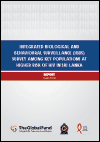
Resource | Publications,
HIV prevalence in Sri Lanka is less than 0.1%, characterized as a low-level epidemic, according to the National STD and AIDS Control program (NSACP). Data amongst key populations is required to evaluate and guide national responses, and currently minimal data is available for key populations in Sri Lanka. Two previous surveys, a behavioural surveillance survey undertaken in 2006/7 and an integrated biological surveillance survey (IBBS) in 2014/15, showed low HIV and syphilis prevalence across all key populations with presence of risk behaviour and low knowledge around HIV.
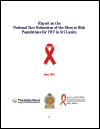
Resource | Publications,
This report describes the process and the results of the size estimation study of key populations (KPs) in Sri Lanka, which was based on the methods of the geographical mapping with enumeration and the multiplier, as well as the results of the consensus-building workshop that utilised the Delphi process to arrive at the final population size estimates (PSE). Following KPs were included in the size estimation study: female sex workers (FSWs), men who have sex with men (MSM), male sex workers (MSW), transwomen, people who inject drugs (PWID) and beach boys (BBs).
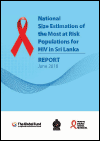
Resource | Publications,
This report describes the process and the results of the size estimation study of key populations (KPs) in Sri Lanka, which was based on the methods of the geographical mapping with enumeration and the multiplier, as well as the results of the consensus-building workshop that utilised the Delphi process to arrive at the final population size estimates (PSE). Following KPs were included in the size estimation study: female sex workers (FSWs), men who have sex with men (MSM), male sex workers (MSW), transwomen, people who inject drugs (PWID) and beach boys (BBs).
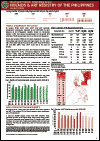
Resource | Fact Sheets,
In August 2018, there were 1,047 new HIV antibody seropositive individuals reported to the HIV/AIDS & ART Registry of the Philippines (HARP). Seventeen percent (176) had clinical manifestations of advanced HIV infection (WHO clinical stage 3 or 4) at the time of diagnosis.
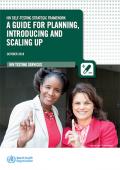
Resource | Guidelines,
This framework is intended to be a brief guide for countries and implementers that are planning, starting or scaling up HIVST implementation. It provides key considerations for: 1) preparing for HIVST; 2) implementing HIVST; 3) monitoring and optimizing HIVST implementation.
When planning and implementing in the real world, many of the steps detailed in this framework may occur concurrently or in a different order. Therefore, it is recommended that this framework be used flexibly and adapted according to specific contexts and epidemics.
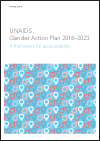
Resource | Publications,
Gender equality in the workplace is a human right and critical to the performance and effectiveness of UNAIDS. Organizations with more equal representation of women at the senior management level considerably outperform their counterparts with a lower representation of women in senior positions. Gender-balanced teams have greater potential for creativity and innovation and contribute to better outcomes in decisionmaking. The centrality of advancing gender equality, including through the achievement of gender parity, is increasingly being recognized, as signalled by the historic System-wide Strategy on Gender Parity, launched by the United Nations Secretary-General in 2017.
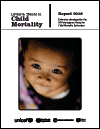
Resource | Publications,
The United Nations Interagency Group for Child Mortality Estimation (UN IGME) produces estimates of child and young adolescent mortality annually. This report presents the UN IGME’s latest estimates – up to the year 2017 – of under-five, infant, and neonatal mortality as well as mortality among children aged 5–14. It assesses progress in the reduction of child and young adolescent mortality at the country, regional and global levels, and provides an overview of the methods used to estimate the child mortality indicators mentioned above.





